by L Baures | Feb 28, 2018 | Trusted Auto Pros
How to remove the ‘Easy-Off’ tailgate on RAM trucks
The RAM easy-off tailgate can be removed from the pickup box for ease of use for mounting an in-bed camper with an overhang. You may also choose to install a tailgate net, louvered or vented tailgate for ease of 5th wheel towing.
Rear view camera and remote keyless entry disconnection
- Open the tailgate
- Between the end of the truck and tailgate, you’ll have electrical connectors for the backup camera and remote keyless entry. Disconnect these connectors by pushing inward on the locking tab. The locking tab is on the side of the connector.
- Connect chassis plug and bracket then tailgate plug. (These parts are provided in the glovebox in new trucks. If they aren’t in the glove box, check the storage bins in the rear floor-if equipped or under the back seats).
- Tape the tailgate harness and bracket against the tailgate (forward facing part). This should avoid the connected getting damaged or corroded.
Removing the RAM ‘easy-off’ tailgate
- With the tailgate open, make sure it is supported by something underneath.
- Unhook the cables on either side by releasing the lock from the pivot
- Lift the tailgate up to about a 45° angle
- Lift the right side of the tailgate higher to release from hanger bracket
- Slide tailgate to the right, releasing the bracket on the left.
- Remove tailgate
NB: Mopar makes a point of saying in the owners manual that the tailgate should not be stored loose in the bed of the truck
Fun fact: Driving with the tailgate down or off does not increase fuel efficiency or aerodynamic efficiency. Check it out, TV hit show, Mythbusters actually tried and tested the theory! “Closing the tailgate actually improves fuel efficiency because it creates a type of airflow called a separated bubble within the bed of the truck”.

2017 RAM 1500 Night Edition Photo: FCA
RAM 1500 What’s new for 2018
What Would You Get on Your Prestige Plate?
“Owner’s Manual RAM.” Official Mopar Site | Service, Parts, Accessories & More”
“Driving With Tailgate Up Is Fuel Efficient.” Discovery, Mythbusters, 18 Sept. 2014″

by L Baures | Feb 27, 2018 | Trusted Auto Pros
Car sickness, aka motion sickness.
According to encyclopedia.com, nearly 80% of the general population has, at least one time in their life had motion sickness. It’s a fairly common problem that can cause nausea, vomiting and in general a lot of discomfort during car/truck travel.
What causes car sickness?
Dr Gupta, CNN chief medical correspondent says the condition is a disequilibrium. Basically a discrepancy between the senses. Whilst your eyes might be telling your brain about your movement, your ears may be telling it something different. Such as whether you are moving, not moving, which direction and at what speed.

Which cars are best if you have car sickness?
This was going to be the original title of this article, however, after conducting some research, it was clear this was no easy task to define. In a Bachelor of Science Thesis on behalf of Volvo Cars study by NATHALIE KARLSSON and HELENA TJÄRNBRO the conclusion states, “Due to the large individual differences it is almost impossible to guarantee a car that does not cause motion sickness”. Having done my own research, I came up with the same answer. Some people get car sick due to the smell, others the view and then there’s the suspension. All of these could be contributing factors, but some will be more relevant for one person and maybe not another. For example, one person preferred a stiffer suspension set up, whilst another felt more comfortable in the softer suspension.
The short answer is, test drive a variety of vehicles (and ride as a passenger) to see which one works for you!

Tips for avoiding car sickness
- Be a driver if at all possible (it seems people are more susceptible to motion sickness as a passenger and esp in the rear seats).
- If you must be a passenger, look out the front window and look for the horizon in the distance.
- Products are available on the market such as medications or sea bands.
- Reduce strong odors in the vehicle.
- Open or crack the windows to allow fresh air in the vehicle.
- If you are a passenger with a bad driver, let them know you how fell so they can try to drive more smoothly.
- Be smooth with gear shifts (in a manual transmission).
- Avoid reading
- Eat a light meal before traveling
- Don’t have the heater blasting on full hot
Do you suffer from car sickness? Which vehicles make it better/worse?
If you’d like to help us out with some research to compile a list of cars and trucks that make it worse or better let us know. Do you know what causes your specific kind of motion/car sickness? Did you ever get in one vehicle that was so bad you couldn’t bare it. Which vehicle do you drive to make it bearable? Do your kids suffer from car sickness, if so, what do you do to make it easier for them? Do low profile side windows help or hinder? Let us know, by commenting below, send us a message on Facebook or send us an email, [email protected].
CNN. “How CNN’s Dr. Gupta Treats His Carsickness.” CNN, Cable News Network, 2008, www.cnn.com/2008/HEALTH/conditions/07/15/car.sick/index.html.
KARLSSON, NATHALIE, and HELENA TJÄRNBRO. “Motion Sickness in Cars Physiological and Psychological Influences on Motion Sickness.” CHALMERS UNIVERSITY OF TECHNOLOGY.
Nield, David. “Here’s Why You Get Car Sick: Your Brain Thinks It’s Being Poisoned.”ScienceAlert, 12 Aug. 2016, www.sciencealert.com/here-s-why-you-get-car-sick-your-brain-thinks-it-s-being-poisoned.

by L Baures | Feb 19, 2018 | Trusted Auto Pros
Ground clearance is the distance from the lowest part of the vehicle to the ground. The bigger that distance is, the more ground clearance (clearance of the ground) the vehicle has. This is particularly useful for off-road situations where the car or SUV (sports utility vehicle) needs to clear objects such as dirt mounds, rocks or even snow.
Whilst pickup trucks can also have good clearance, they are not always the most practical option if say perhaps, you need to seat more people. It may also just be a personal preference or it comes down to cost and/or feature availability that you may choose an SUV.
Here are some of the 2017/2018 model year SUVs with the best ground clearance numbers.
SUV’s with the best ground clearance
- The Jeep Grand Cherokee (Trailhawk Edition) has an air suspension which gives it a huge advantage. The luxury off-road SUV can be lowered or raised with just the push of a button. The 2017 Jeep Grand Cherokee has a staggering 10.8″ of ground clearance when raised.

Photo: FCA
- Jeep Wrangler. Unsurprising the Jeep Wrangler comes in next with the new 2018 Wrangler JL Sahara and Rubicon models. With 10″ and 10.8″ of ground clearance respectively. No wonder these machines have an off-road cult following.

Photo: FCA
- Toyota Sequoia. The flagship full-size SUV from Toyota has great ground clearance at 10″. Not only can this large vehicle negotiate obstacles off-road, but can do it whilst seating people in the 3rd row.

- Ford Expedition. The 2018 model year Ford Expedition is a complete redesign of the full-size SUV. 9.8″ of ground clearance is impressive for a 3rd-row vehicle that doesn’t really have much of an ‘off-road’ history like some of the vehicles mentioned above do.

Photo: Ford
- Toyota 4Runner. The TRD Pro is the top of the off-road equipped model of the 4Runner. With a little extra height on this trim level, the TRD Pro makes 9.6″ of ground clearance.

Photo: L Baures
- Toyota Land Cruiser. Next in line is another one from Toyota. The Land Cruiser is a proven capable vehicle that has been around since the dinosaurs. OK maybe not quite that long, but it’s been a while. The Land Cruiser comes in with 8.9″ of ground clearance.

Photo: Toyota
- Jeep Cherokee. Don’t judge this little one by its size when it comes to ground clearance. The Jeep Cherokee may be smaller than the rest but it can keep up with the big boys. The Cherokee Trailhawk (off-road trim) has 8.8″ of ground clearance.

Photo: FCA
Now you know which SUVs have the best ground clearance available in Wyoming.

by L Baures | Feb 15, 2018 | Trusted Auto Pros
Here’s a quick tutorial on changing the time/clock on a 2016/2017 model year Jeep Renegade. First, you will have to figure out which screen version you have. Look at the pictures below and compare to the one in your vehicle.
2016/2017 Jeep Renegade
There are three different screen models in the Renegade. The 3.0 (RA1), 5.0 (RA2) and the 6.5 (RA4).
-

-
3.0 (RA1)
-

-
5.0 (RA2)
-

-
6.5 (RA4)
How to change the clock on the 3.0 (RA1)

3.0 (RA1)
- Press the MENU button (middle bottom of the radio)
- Push ENTER/BROWSE (bottom right)
- Select TIME and FORMAT
- Use the ENTER/BROWSE button to select SET TIME
- Hours and minutes can be adjusted by turning TUNE/SCROLL knob
- Push the ENTER/BROWSE button to move to the next section
- When you’re happy with time set, press BACK to exit
How to change the clock on the 5.0 (RA2)

5.0 (RA2)
- On the right-hand side of the radio, push the MORE button
- Press the SETTINGS option on the touchscreen
- Select CLOCK and DATE
- Press SET TIME
- Touch UP or DOWN arrows to set the hours and minutes
- Select 12hr or 24hr format
- On the touchscreen, select DONE to exit
How to change the clock on 6.5 (RA4)

6.5 (RA4)
If the clock is not displayed, on the touchscreen press SETTINGS then CLOCK, followed by ON.
On the 6.5 (RA4) system, the clock is automatically updated using information from the GPS. If for some reason, you need to set it manually here’s how:
- On the touchscreen, select the clock display
- A message will appear asking if you’d like to set the time
- Press YES
- Select “+” or “-” to adjust the hours and minutes
Fun fact, Daylight Savings is not always on the same date, but it always on a Sunday.
For Wyoming, in 2018 Daylight Savings Time will change on Sunday, March 11th. At 2 am the clocks will go forward. On Sunday, November 4th, at 2 am the clocks will go back.
Do you have a question or topic you’d like us to write about? Get in touch, comment below or shoot me an email.
FCA CEO Sergio Marchionne Passes, Mike Manley takes the Lead

by L Baures | Feb 13, 2018 | Trusted Auto Pros
Winter in Wyoming
We all know that salt is corrosive and can cause rust on metal. In Wyoming, we don’t need to worry as much about salt damage as they do in other States. States that are close to the Ocean, for example, not only have to deal with salt on the roads to melt snow, but salt from the Ocean mixed with moisture will corrode a vehicle.
A recent report from SafeWise, states that WYOMING RANKS AS THE MOST DANGEROUS STATE FOR DRIVING IN SNOW.

Considering the sheer amount of snow Wyoming gets, we can probably all agree, it’s a good idea to clear the roads.
The impact of bad winter road conditions can be horrific and terrifying at best. Aside from plowing the roads, WYDOT (Wyoming Department of Transport) also put down a salt/sand mix and other chemicals before and after snowstorms.
Which road chemicals are used in Wyoming?
We contacted WTDOT to find out a little more about the chemicals they use. Sand has no effect on melting snow or ice and is purely used as an aid to give tire traction. A salt/sand combination is used regularly. WYDOT says that each area has its own effective blend of sand and salt. More salt may be added to the sand to stop the stockpile from freezing. If the stockpile freezes it will result in large chunks of sand that cannot be used. The goal is to be able to spread the mix evenly on the highway.
- Magnesium chloride
- Salt brine
- Geo-melt
- Ice-slicer
Magnesium Chloride
Magnesium chloride is widely used, “which is a natural combination of chlorides and dirt or grit”, says WYDOT, “…mined from the ground without any modification and looks much like our normal sand/salt material, only the concentration of salt is much higher”.
Salt brine and Geo-melt
Salt brine is a 23% Sodium Chloride 77% water mix that is used on snowpack. Geo-melt is added to the salt brine to assist in lowering the melting point, which means it will melt snow and ice down to about 8-10°F (depending on air temperature and wind).

Lines on the road from Salt brine Photo: Wikimedia, user Z22
“WYDOT is starting to do more anti-icing which is to place a layer of salt brine on the pavement before the snow begins to fall. As the snow builds up during the storm the salt brine keeps the snowpack from bonding to the pavement. This helps the snow plow remove the snowpack down to bare or wet pavement”.
When are they used?
These chemicals are used in different applications depending on the conditions. WYDO says they use Sodium Chloride the most because it’s the cheapest and works down to about 5 to 10 degrees. If the weather prediction calls for colder temperatures then Magnesium Chloride is used, down to about -5 to -10 degrees. If it gets really cold then Ice Slicer is used.
All of these chemicals are salt based.
How do these chemical affect my vehicle?
Salt + Water + Metal = Rust.
Although vehicles can be galvanized or have some paint protection, salt and/or corrosive products can still penetrate (especially underneath your vehicle). This will eventually cause rust. Rust will eat away at the metal, leaving nothing. Rust is not easy to get rid of either and will spread like a disease. It may also make it maintenance more expensive and/or take longer to repair due to parts being corroded or rusted.
Tips to protect your vehicle from salt, sand and winter de-icing chemicals

- Wash your vehicle before (salt brine can be applied to roads before a storm) and as soon as you can after a storm. Make sure it gets dried or any missed salt could stay in damp areas.
- Make sure you also wash the underneath of the vehicle (some drive-thru car washes offer this).
- Clean out wheel arches with a power washer.
- There are products available on the market to remove salt from vehicles (like a shampoo that specifically targets salt).
- Wax the vehicle at least once a year.
- Have a paint protection applied and keep it topped up/waxed.
- Have an undercoat protection applied to underneath the vehicle.
- If you do find some rust on body panels, have it treated/removed asap.
- Consider a ceramic coating.
More on Winter Vehicle Care Tips
Inama, Aimee. “Media inquiries – caring for vehicles”. message to WYDOT, 2 Feb 2018. Email.
Blogteam, Allstate. “Does Living Near The Ocean Affect Your Car?” The Allstate Blog, 12 July 2017, blog.allstate.com/does-living-near-the-ocean-affect-your-car/.
WY, DOT. “ WYDOT Prepares for Winter Season.” WYDOT Prepares for Winter Season – Pinedale, Wyoming, Pinedale Online, 25 Oct. 2015
“FAQ.” Ice Slicer, IceSlicer, 2015, www.iceslicer.com/faq.
“Magnesium Chloride Is It Bad for Your Car?” NH Oil Undercoating, 23 Nov. 2015, nhoilundercoating.com/magnesium-chloride-is-it-bad-for-your-car.
Cassidy, Erin. “Rock Salt versus Salt Brines: What’s Best for Road Safety?” Local Weather from AccuWeather.com – Superior Accuracy™, Accuweather.
Salt brine photo By Z22 (Own work) [CC BY-SA 3.0 (https://creativecommons.org/licenses/by-sa/3.0)], via Wikimedia Commons.
Ballard, Caroline. “Report Says Wyoming Most Dangerous State For Driving In Snow.”Wyoming Public Media, 28 Dec. 2017, wyomingpublicmedia.org/post/report-says-wyoming-most-dangerous-state-driving-snow#stream/0.

by L Baures | Feb 12, 2018 | Trusted Auto Pros
Updated 9/5/18
Fuel Efficient 4WD Pickup Trucks
With so many engine and transmission options on the market today, this can turn into quite a complex question. It’s easy for a manufacturer to claim most fuel-efficient truck, but they are most likely referring to the one with the least power or smallest engine. We want trucks to do truck things right, so the smallest engine might not work for everyone. To make it easier, I’ve compiled a list, taking the fuel economy numbers from the U.S. Department of Energy with vehicles placed in order based on ‘combined’ fuel consumption figures.
Compact Pickup Trucks
-

-
GMC Canyon
-

-
Toyota Tacoma
-

-
Chevrolet Colorado
Diesel
The only compact pickup trucks with a diesel engine at the moment are the GMC Canyon and Chevrolet Colorado.
- GMC Canyon and Chevrolet Colorado 2.8L Turbo Diesel Auto 6-speed 23 mpg combined (20mpg city/28mpg highway)
4 Cylinder Gas
- GMC Canyon and Chevrolet Colorado 2.5L Auto 6-speed 21 mpg combined (19mpg city/24 mpg highway)
- Toyota Tacoma 2.7L Auto 6-speed 20 mpg combined (19mpg city/22 mpg highway)
6 Cylinder Gas
- Toyota Tacoma 3.5L Auto 6-speed 20 mpg combined (18mpg city 22 mpg highway)
- GMC Canyon and Chevrolet Colorado 3.6L Auto 8-speed 19 mpg combined (17mpg city 24 mpg highway)
- Nissan Frontier 4.0L Auto 5-speed 17 mpg combined (15 mpg city 21 mpg highway)
Full size (half ton) 1500 pickups
Diesel
Currently only one vehicle in this segment, however, Ford will be coming out with their diesel F-150 in the next few months.
- RAM 1500 EcoDiesel 3.0L V-6 (240hp/420lb-ft torque) 27 mpg comined (21/29) ¹
Due to the Ford F-150 having two options for the twin turbo Ecoboost on smaller displacement engines, it wouldn’t be fair to list these by cylinders. These are grouped in accordance to horsepower.
-

-
Chevrolet Silverado
-

-
Ford F-150
-

-
GMC Sierra
-

-
RAM 1500
Less than 310hp- it’s a three-way tie!
- RAM 1500 3.6L V-6 (305hp/269lb-ft torque) Auto 8-speed 19 mpg combined (16/23)
- Ford F-150 3.3L V-6 (290hp/265lb-ft torque) Auto 6-speed 19 mpg combined (17/22)
- GMC Sierra/Chevrolet Silverado 4.3L V-6 (285hp/305 lb-ft torque) Auto 6-speed 19 mpg combined (17/22)
310hp-380hp
- Ford F-150 2.7L V-6 EcoBoost (325hp/400lb ft torque) Auto 10-speed 21 mpg combined (19/24)
- GMC Sierra/Chevy Silverado 5.3L V-8 (355hp/383 lb-ft torque) Auto 6-speed 18 mpg combined (16/22)
- Ford F-150 3.5L V-6 EcoBoost (375hp/470lb ft torque) Auto10-speed 18 mpg combined (16/21)
- GMC Sierra/Chevy Silverado 5.3L V-8 (355hp/383 lb-ft torque) Auto 8-speed 17 mpg combined (15/20)
What’s interesting here is that the 6-speed auto is more fuel efficient than the 8-speed transmission in the GMC Sierra
380hp +
This category is interesting because the trucks listed previously are all either regular gas or diesel. In this section, not all the trucks are based on regular gasoline, so whilst the mpg might be similar it may be based on premium fuel, which costs more than regular fuel. Therefore this section will be based on fuel costs as listed on U.S. Dept Energy. (*Based on 45% highway, 55% city driving, 15,000 annual miles and current fuel prices)
- Ford F-150 5.0L V-8 (395hp/400 lb-ft) Auto 10-speed 17 mpg combined (15/19) Regular gas Annual fuel cost $2,200*
- RAM 1500 5.7L HEMI V-8 (395hp/410lb-ft) Auto 8-speed 17 mpg combined (15/21) Midgrade gas Annual fuel cost $2,450*
- GMC Serra/Chevy Silverado 6.2L V-8 (420hp/460lb-ft) Auto 8-speed 17 mpg combined (15/20) Premium gas Annual fuel cost $2,650*
- Toyota Tundra 5.7L V-8 (381hp/401 lb-ft) Auto 6-speed 14mpg combined (13/17) Regular gas Annual fuel cost $2,700*
- RAM 1500 5.7L HEMI V-8 (395/410 lb-ft) Auto 6-speed 14 mpg combined (13/18) Midgrade gas Annual fuel cost $3,000*
Fuel Efficient 4WD Pickup Trucks are a matter of which fuel efficiency level is suitable for your needs in a truck.
“Compare Side-by-Side.” 2018 Nissan Titan 4WD, 14 Dec. 2017, www.fueleconomy.gov/feg/Find.do?action=sbs&id=39668.
Photos from respective manufacturer media sites
¹Per FCA Media
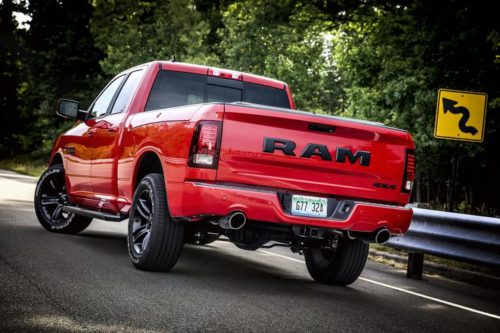



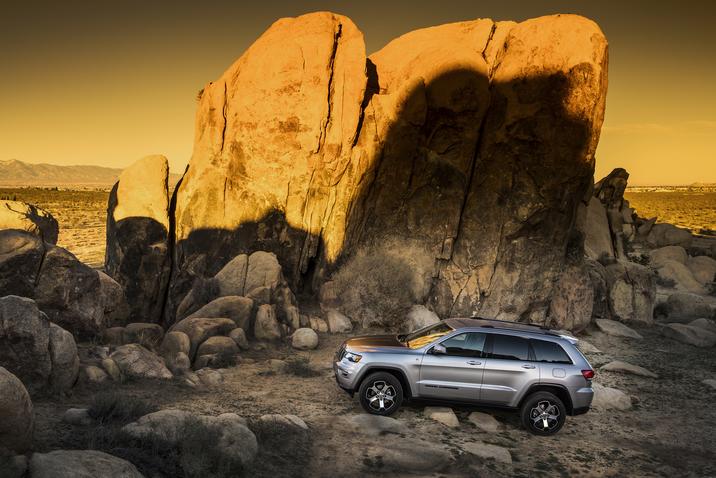
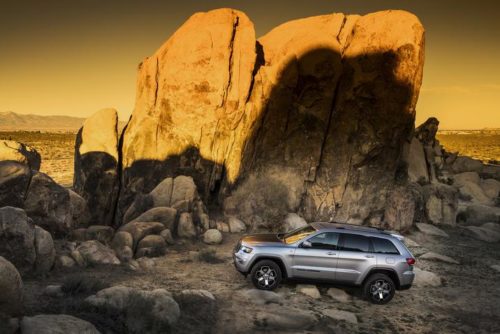


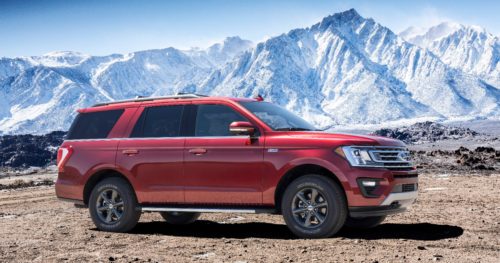



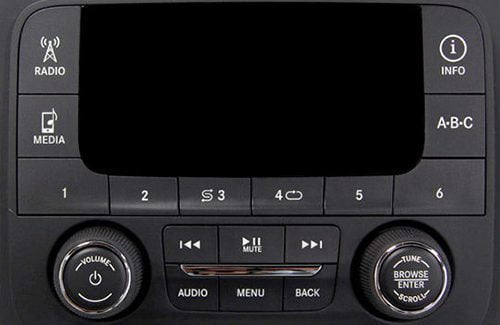
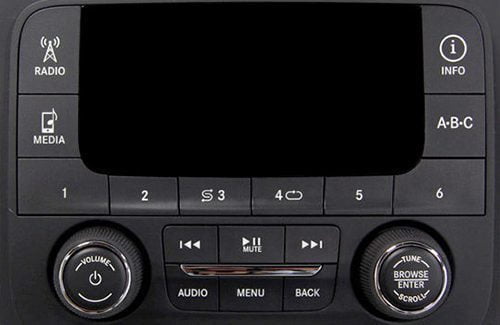
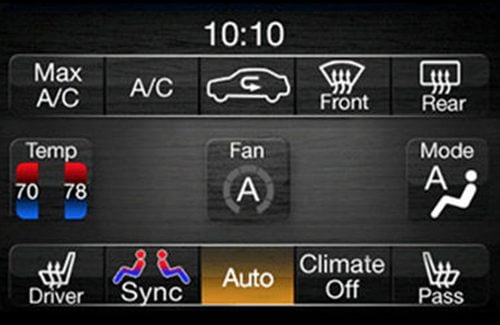
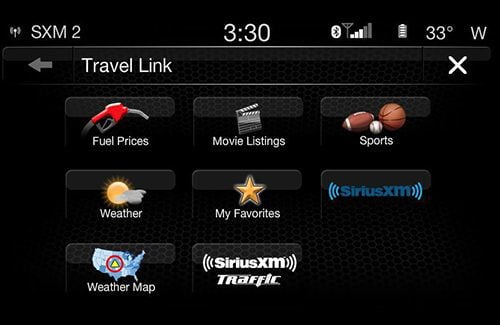
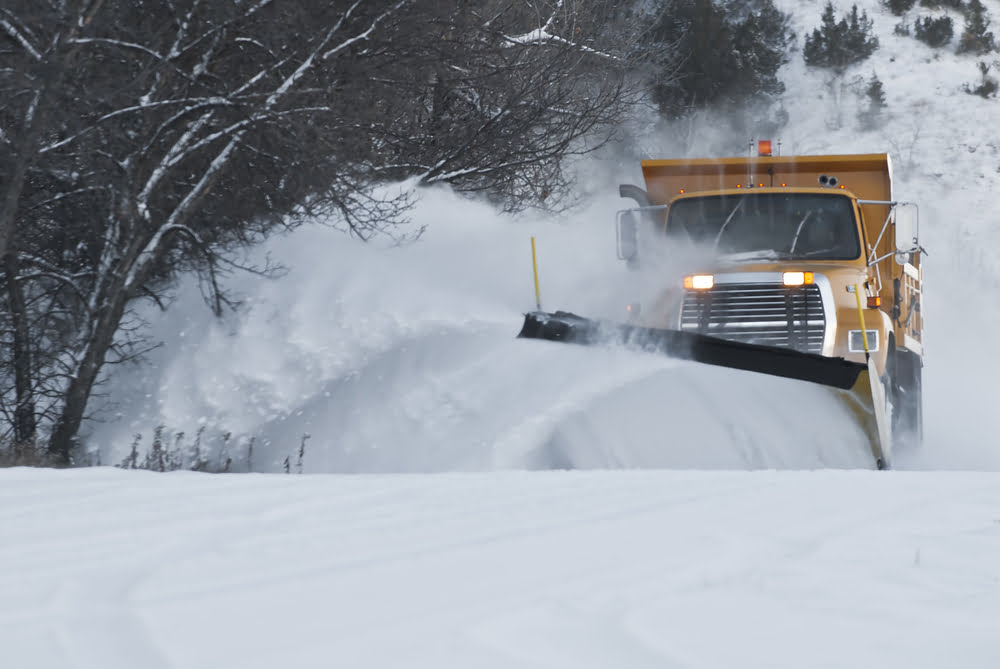
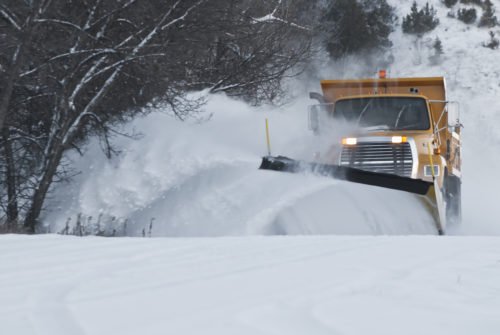
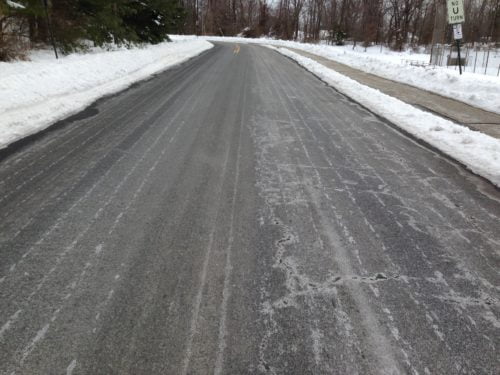
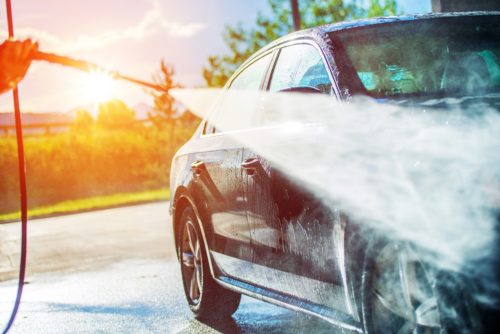
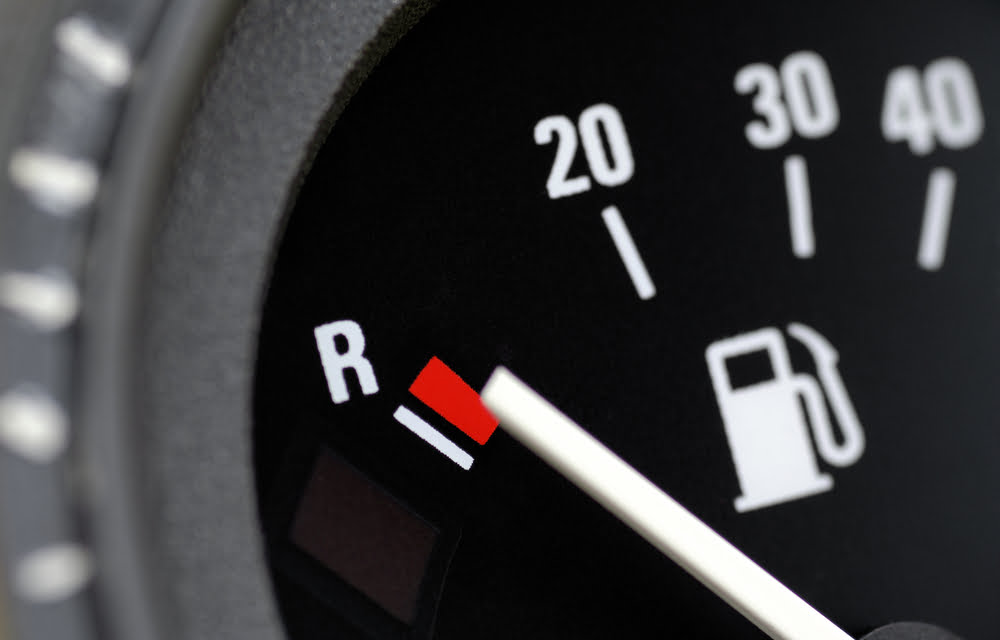
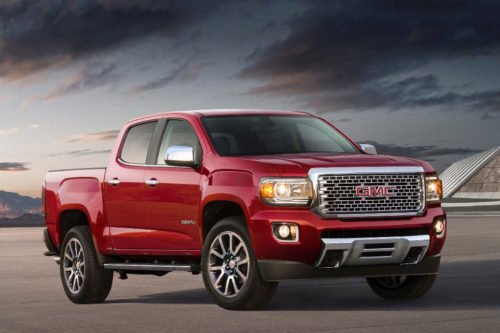
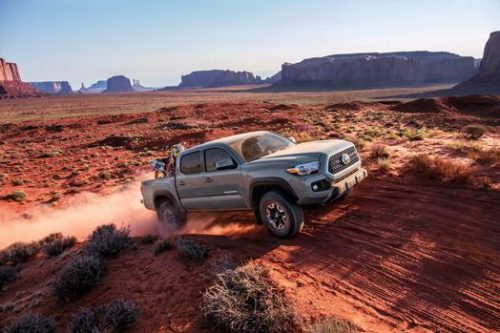
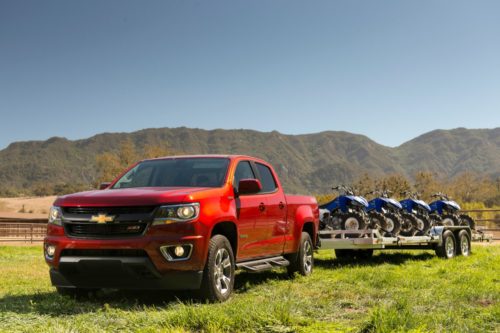
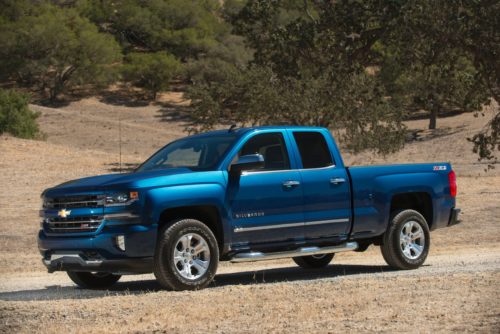
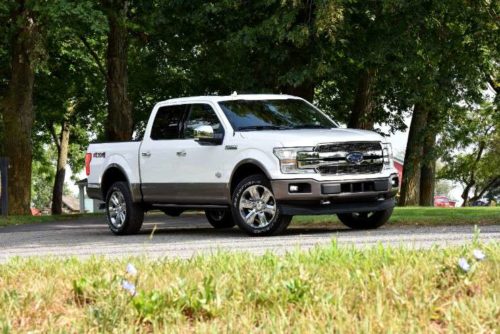
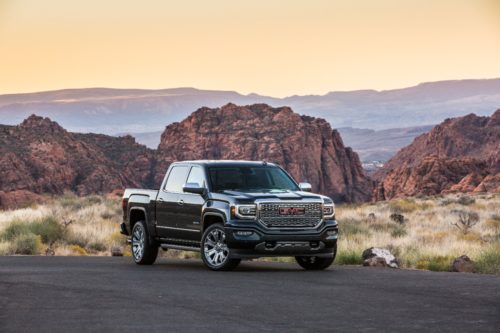
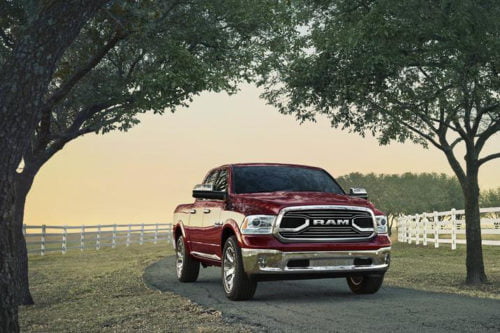
Recent Comments